How to mount a watercolor painting on board, a step by step tutorial
January 21, 2014 2022-02-22 10:29How to mount a watercolor painting on board, a step by step tutorial
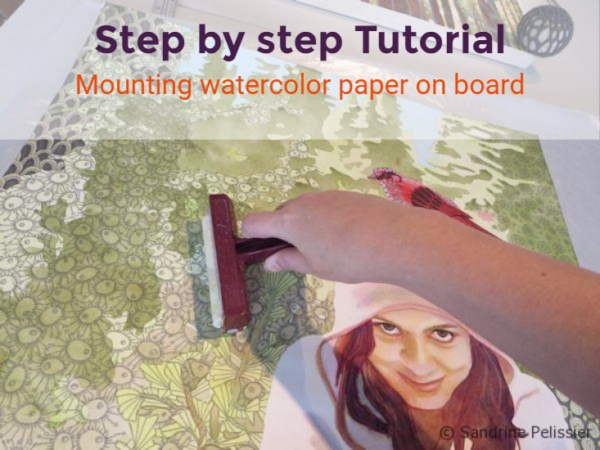
How to mount a watercolor painting on board, a step by step tutorial
I usually like to mount paper on board before I start painting as this allows me to stretch it in the process of mounting it. But you might have a few watercolor paintings on paper, that are already done and that you would like to mount on paper. Here is how to do it.
Lily Pads on One Mile Lake has been painted on paper that had been previously mounted on board. Click here to see pictures of that technique: Mounting watercolor paper on board.
How to mount a watercolor painting on board
This time I had a few already painted watercolors on paper that I thought would look good once mounted on board and varnished. Here are the steps I took:

The first step is to find a board that is the same size of the painting. For some of the watercolors I had to order some custom sized boards as they were not fitting into the standard sizes or I would have had to cut too much of the painting to make it fit. Now I am going to give more though to the size of what I paint before to make sure it will fit standard sizes.
Then I did trim the sides of the painting to make it easier to place on the board for the next steps.

I am spreading heavy body gel medium with a stiff brush all over the board, paying specific attention to the sides and the corners of the board.
I am a Blick Art Materials affiliate and I receive a small compensation for sales. That does not effect in any way the cost of the purchaser’s order but it helps me keeping the content of this blog free.

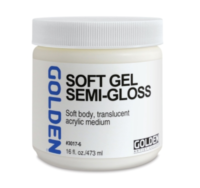 |
Golden Acrylic MediumsRange of consistency from pourable to moldable, with various levels of finish and transparency. Create glazes, extend paints, build texture, change finishes. Gel types: Soft, Regular, Heavy, Extra Heavy, and Pumice. |

Heavy body gel medium is better than the liquid kind because the paper won’t get too wet and that reduces the risks of the paper buckling. Liquid gel also tend to be absorbed very fast by the wood of the panel and that might result in areas of your paper that won’t adhere to the board.
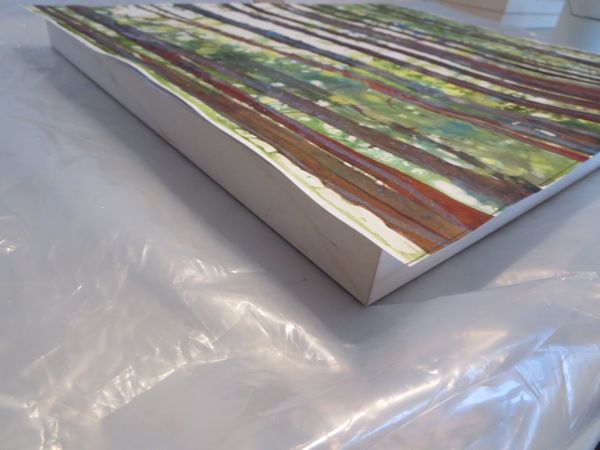
I am then centering the painting on the board being very careful that no medium goes on top of the painting.
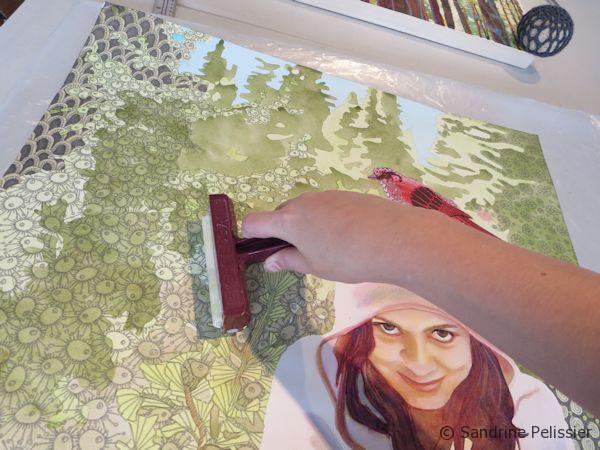
The next step is important as you want to avoid the formation of air bubbles.
Then I am using a brayer roll to evenly fix the paper to the board and to remove potential air bubbles. I am also being very careful that the brayer stays clean and that no medium goes on top of the painting.
I am a Blick Art Materials affiliate and I receive a small compensation for sales. That does not effect in any way the cost of the purchaser’s order but it helps me keeping the content of this blog free.

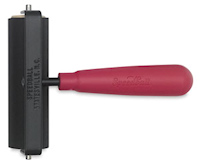 |
Speedball Hard Rubber BrayersA hard synthetic rubber roller (80 durometer) makes these brayers ideal for light carving or gluing applications, and excellent for rolling down print surfaces. – Deluxe Brayers |

I am leaving the painting to dry overnight. I added some weight in each corner to make sure they won’t lift while drying. ( In case you are wondering the paper weights are big river rocks that I did cover with crochet).
The corners of the painting are the areas that are most susceptible to lift off after the medium had dried.

The next day everything has dried, now I need to trim the excess paper on the sides.

I am using a cutter to do so.
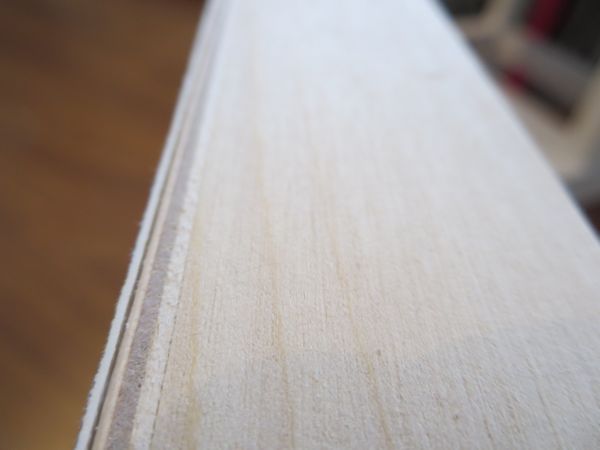
If the sides are not straight enough after trimming, I sometimes use a sander to finish them. Next step will be fixing the watercolor and varnishing it. I did detail that process in the following post: How to finish and display your paintings on paper : A few options


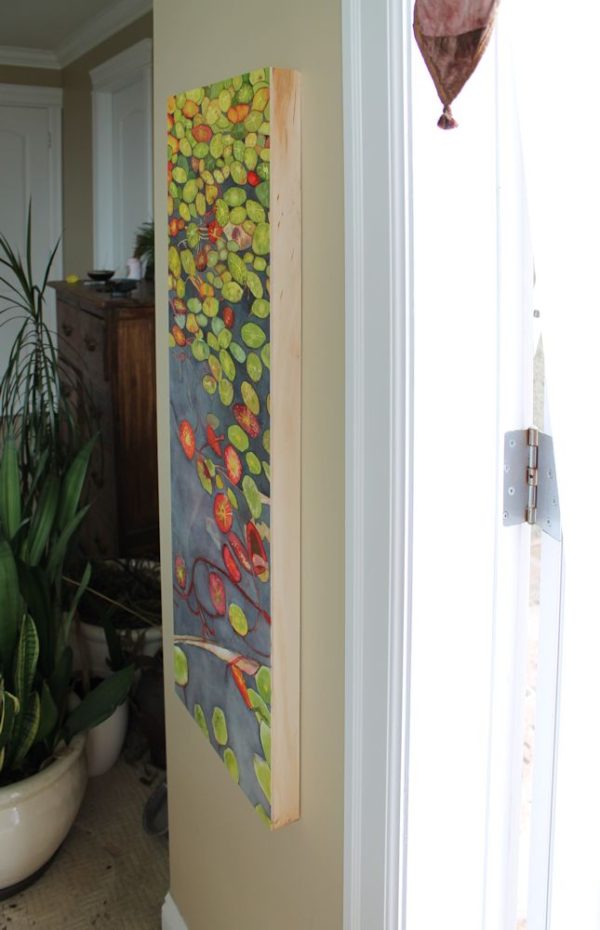



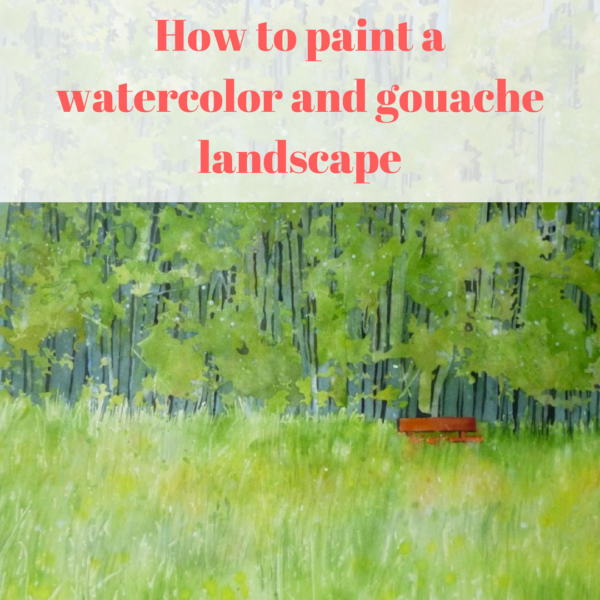
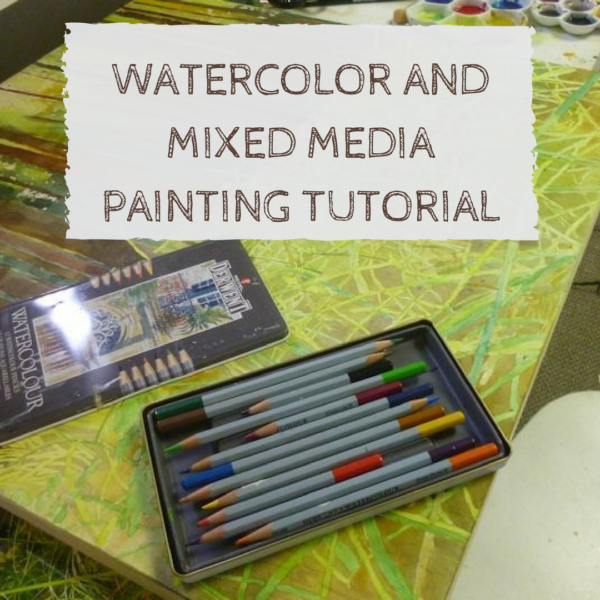
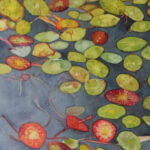
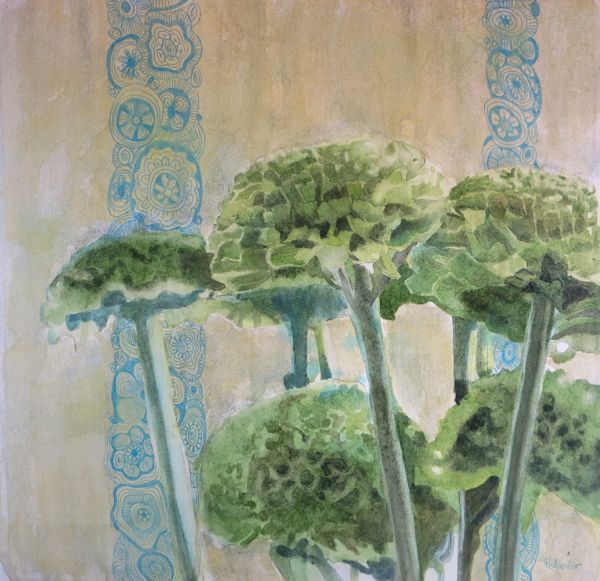


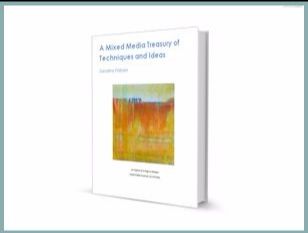

Comments (22)
marie
Sandrine, I was just wondering can this 1} be used on a canvas 2} what is this gel that you use can it be made or do you purchase it?
Sandrine
Hello Marie, I think this should work on canvas but I have not tried it myself, let me know if you try it.
This is the gel I am using: http://www.kqzyfj.com/click-7644630-11428147?url=http%3A%2F%2Fwww.dickblick.com%2Fitems%2F00628-1276%2F&cjsku=00628-1276
I don’t think you can make it.
How to mount watercolor paper on board step by step
[…] Alternatively, you can mount your painting after it has been painted. The advantage here is that you are sure you like the painting before you start mounting it, but you also have to be very careful not to put any of the medium on the painting. Click here to see a tutorial on how to mount your painting on board : How to mount a watercolor painting on board […]
How to apply Dorland's wax medium on watercolor
[…] You might also like: Mounting a watercolor painting on a cradled panel board, a step by step tutorial […]
Lisa Gibson
Does the heavy gel medium seal the wood from leaching through to the painting like a primer would do? Also, why do you put the gel on the sides as well? I don’t see any brush marks on the sides in your close-up shots – do they fade away from drying? Thank you for your time and I LOVE your work! 🙂
Sandrine Pelissier
Thanks Lisa. Yes the heavy gel medium acts as a sealant to prevent acid from the wood to damage the acid free paper. I don’t apply the gel on the sides of the board because they won’t be in direct contact with the paper. I apply the finish (wax or varnish) on the sides when I am applying it on the paper.
Lisa Gibson
That makes sense – thank you! 🙂
Weilih
Love your work. Where do you get your cradled panel board? Thanks.
Sandrine Pelissier
Thanks Weilih 🙂
I buy my boards at Opus: https://store.opusartsupplies.com/sagro/storefront/store.php?mode=browsecategory&category=147
but if you have the tools, they should be easy to make.
Landscape Watercolor painting with zentangles : Rainforest Imagery
[…] To see a tutorial about mounting paper on board, click here: Mounting watercolor paper on board […]
Tracie
Hi Sandrine, What kind of heavy body gel are you using? I have some KROMA medium viscosity matte finish Medium. If I give it a little air time before applying my map paper (which is very thin), do you think this will be the best route to prevent buckling?Any other technique ideas? Thanks Tracie
Sandrine Pelissier
Hello Tracie, I am using Golden Heavy gel mate: https://store.opusartsupplies.com/sagro/storefront/store.php?mode=showproductdetail&product=17606
I find it very convenient as it is thick enough so that the paper doesn’t get too wet.
Tracie
Thank you, I’ll give it a try. by the way I’m looking forward to the studio tour in april. I hope you’ll be part of it?
Appreciatively
Tracie
How to apply a wax finish to a watercolor painting on paper mounted on board.
[…] Mounting watercolor paintings on board […]
Linda Millard
Absolutely beautiful work Sandrine. Did you get to do your tutorial yet on
how to vanish? Thank you for sharing your passion, skill and talent, look forward to your advice before I launch into the process! Linda from Oz
Sandrine Pelissier
Thanks Linda 🙂
I just finished writing the tutorial on how to apply the wax finish and this one will be published on February 17, and am in the process of writing the one on varnish finish. If you subscribe to my mailing list here: http://eepurl.com/kAKE5, you will be notified each time a new post get published.
dsaquarelles
très intéressant. Bonne idée d’utiliser heavy body gel medium. Merci de partager.
Sandrine Pelissier
Merci, je suis contente que cela t’es interessee:)
Liz Thoresen
Thank you for sharing! Looking forward to the post on varnishing.
Sandrine Pelissier
Thanks Liz 🙂
Sharon
Hi, just wondering, do you put anything on the painting to protect it?
Sandrine Pelissier
Hello Sharon, in that case I did varnish the paintings after they were mounted and dried.